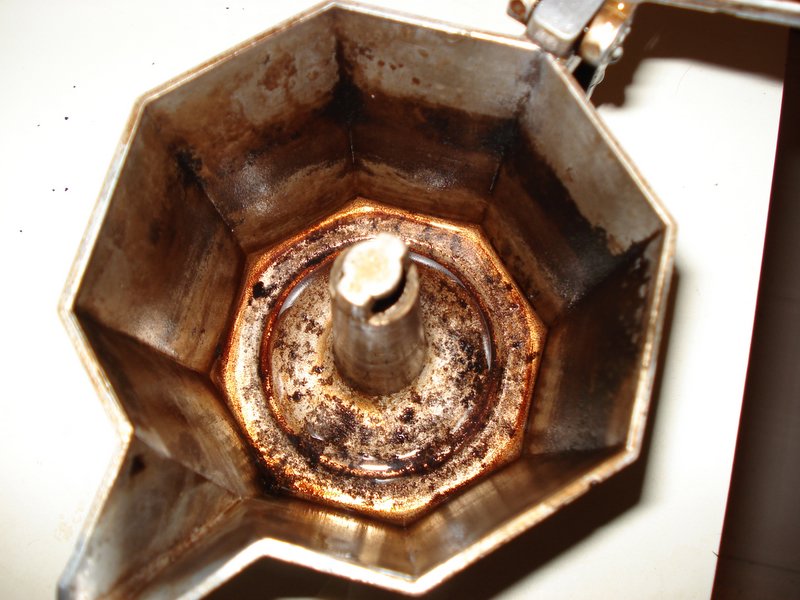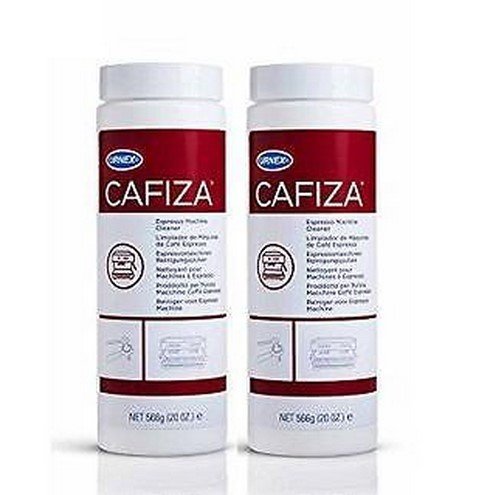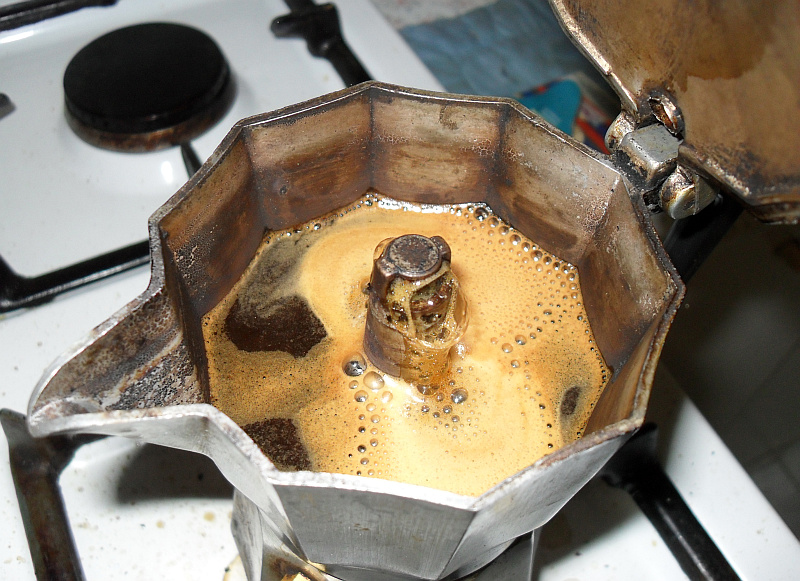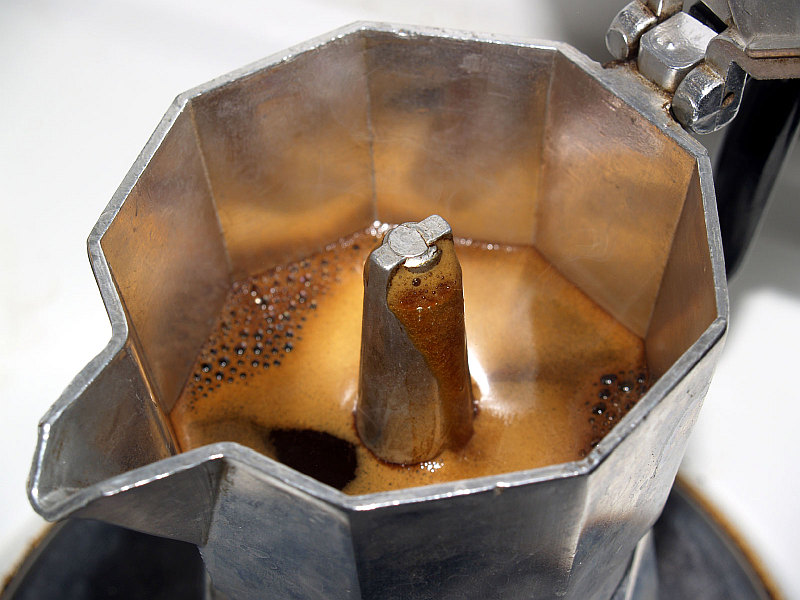Cleaning your Moka pot is one of the misunderstood things, and there is a lot of bad advice on the Internet. You might have read on the Internet that you should never wash you Moka pot. That is the worst advice someone can give.
Coffee oils and sugars that are deposited on your coffee maker, oxidize and burn. And contrary to the popular belief, the burnt coffee will spoil the taste of your freshly made coffee.

Learn how to clean your moka pot and descale it. This will ensure a perfect coffee. You need a clean pot, you don’t want patina.
The Stovetop Baptism
If your stovetop is brand new, you’ll need to perform a little ritual of love before you get your first kiss! Wash all the parts in hot water. Brew two or three pots before consuming any espresso – good excuse to throw away any old beans…
This is the last time when you brewed 2-3 pots of coffee without washing it.
How to Clean the Moka Pot
Clean your pot with soap, it’s the best way to clean the coffee oils from the aluminium. Aluminium is porous, compared to stainless steel, so you might need a bit more soap.
Avoid is the use of strong or over-perfumed chemicals. All you need is to degrease your coffee maker.
Disassemble your coffee maker and properly clean all of you pieces individually with soap and water. Make sure you remove the gasket and clean underneath. Don’t forget to clean the funnel as well.
Watch the video below for an in depth cleaning tutorial.
Extra Cleaning
If you didn’t clean your machine for a long time, and you see oil deposits on your filter, you can use Cafiza® Powder. This stuff is really powerful, and is used to clean the brew head of the espresso machines.

Moka Pot Descaling
If the water in your area is very hard, your Moka pot needs descaling from time to time. It needs descaling less than a coffee machine, but it is wise to do it from time to time so the filter is not obstructed.
Moka pots create a lot of pressure generated by the steam. If the filter is not clean it could increase this pressure in the boiling chamber. The safety valve normally is going to take care of the extra pressure in the Moka pot. However, if your water is hard, the valve will clog. So this ads one more reason to descale. If you cover the valve with water, it will not be able to let out the steam.
The best solution for descaling your moka pot is white vinegar. Vinegar cleans, disinfects, and removes odors without leaving a trace. But above all, is an excellent remedy against mineral deposits.
Clean the outside of the pot with a soft sponge or a cloth soaked with a little vinegar. You coffee maker will shine like new after being cleaned this way. After the vinegar wash, rinse with water and leave it to dry.
To clean the inside of the Moka pot use a mixture of 2 parts water and 1 vinegar. Pour into the tank the above solution, assemble all the parts as if you were to make coffee, but don’t put the coffee grounds. Put it on the stove on low heat and allow all the vinegar solution to boil and pass into the collector chamber. Once the vinegar has collected, turn off the heat and let it cool down. Repeat the operation with water only on low heat. Rinse with tap water. Your moka pot is descaled.
Final Words and an Alternative
I said that you need to wash your Moka with soap, and it’s not acceptable to wash it with water only. Well, that might not be entirely true… Let me explain.
First of all, I don’t take back the patina bit. Please, do not let your Moka pot get a patina. That is plainly wrong. Secondly, you don’t’ absolutely need t wash it with soap, you can use hot water, but you need to wipe it dry after the rinse. Use tissues or a kitchen towel to wipe it. This has two effects:
- It removes the water from the Moka body, preventing rusting and oxidation.
- It wipes the extra oils that won’t go with hot water only.



You must be logged in to post a comment.